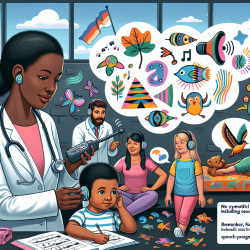As a speech-language pathologist, making data-driven decisions is crucial to improving outcomes for children. One of the critical areas in childhood development is pragmatic language, which involves the social, emotional, and communicative aspects of language. Recently, the research article "Applying Item Response Theory (IRT) Modeling to an Observational Measure of Childhood Pragmatics: The Pragmatics Observational Measure-2" has provided valuable insights into evaluating and enhancing pragmatic language assessments.
The study utilized Rasch analysis, a type of IRT model, to evaluate the Pragmatics Observational Measure (POM). The POM is designed to assess pragmatic language skills in children during peer-to-peer interactions. By analyzing data from 342 children aged 5-11 years, including those with ADHD and typically developing peers, the researchers aimed to refine the measure for better reliability and validity.
Key findings from the study include:
- Reliability and Validity: The POM-2 demonstrated excellent person (0.97) and item (0.99) reliability. The revised measure effectively separates children into distinct levels of pragmatic language ability.
- Dimensionality: The analysis revealed that pragmatic language consists of both verbal and non-verbal components. This led to the creation of two elements within the POM-2: Verbal Communication and Non-verbal Communication.
- Item Refinement: Four items (creativity, thinking style, express feelings, and requests) were removed due to poor fit, resulting in a more streamlined and accurate measure.
- Cross-Cultural Validity: The POM-2 showed good cross-cultural validity, although further research with more diverse populations is recommended.
Implementing these findings in practice can significantly enhance the assessment of pragmatic language skills in children. Here are some practical steps for practitioners:
- Utilize the POM-2: Adopt the revised measure to assess both verbal and non-verbal pragmatic language skills more accurately.
- Focus on Naturalistic Contexts: Ensure assessments are conducted in naturalistic play settings to capture genuine interactions.
- Provide Training: Offer training for clinicians in using the POM-2, emphasizing the observation of verbal assertion and self-regulation skills.
- Encourage Further Research: Advocate for additional studies to test the POM-2's reliability and validity across different clinical and ethnic groups.
By incorporating these strategies, practitioners can better identify and address pragmatic language impairments in children, leading to more effective interventions and improved outcomes.
To read the original research paper, please follow this link: Applying Item Response Theory (IRT) Modeling to an Observational Measure of Childhood Pragmatics: The Pragmatics Observational Measure-2










